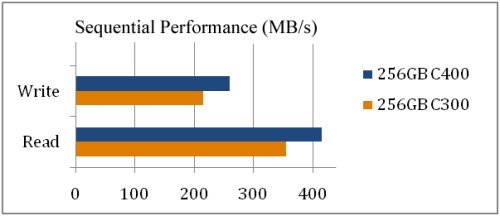
Sykes on the other hand tells a whole different story, he claims the perceptions about the quality of 25nm NAND flash memory are misplaced and states it is possible to build great SSDs with 25nm NAND flash memory.
If you’re a fan of SSD technology, you’ve probably seen some of the forum buzz about new 25nm NAND SSDs. One of our SSD competitors rolled one of their existing models to new 25nm NAND, but they created a slower, lower-capacity drive—and didn’t change the model number or any of the marketing to acknowledge these shortcomings.According to Sykes, Micron's own C400 SSD with 25nm NAND flash memory will not suffer from these issues. In the blog post he claims the C400 will offer the same endurance (in terms of total bytes written) as the C300 and that performance will be noticeably faster.
Their customers are upset (and rightfully so). The end result of all this has created some negative perceptions about the quality of 25nm NAND, which is really misplaced. It is possible to build great SSDs with 25nm NAND; but you do have to be deliberate about your process and objectives (it also helps to have inside knowledge about how that NAND works). I want to use today’s blog to lay out some of the key principles that guided the development of the RealSSD™ C400—our own 25nm SSD (the retail version will be branded as the Crucial M4 SSD)..
SSD Enthusiasts are aware that new NAND designs start out at lower endurance cycle counts than the previous generation, and are sometimes wary of next-generation SSDs as a result. But cycle counts don’t necessarily translate 1:1 to drive endurance specs—good NAND management (via the firmware and controller) is the key.Micron's C400 will hit the market by mid-March.
We specify SSD endurance in total bytes written (TBW). The 25nm C400 offers the same endurance as the C300 for the 128, 256 and 512 GB models—72 TB TBW. This is equivalent to 40GB per day every day for 5 years, and far exceeds the patterns of any PC user. The 64 GB drive endurance is rated at 36 TB TBW—that’s 20 GB per day over the same time period, which still exceeds typical consumer use patterns.
